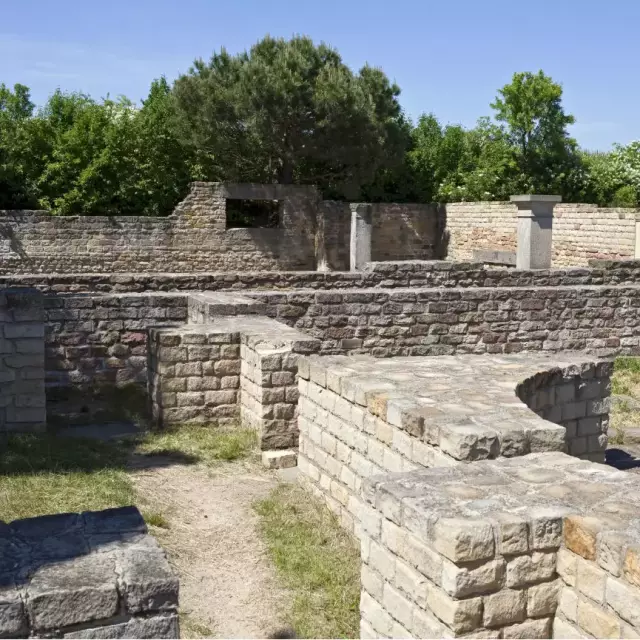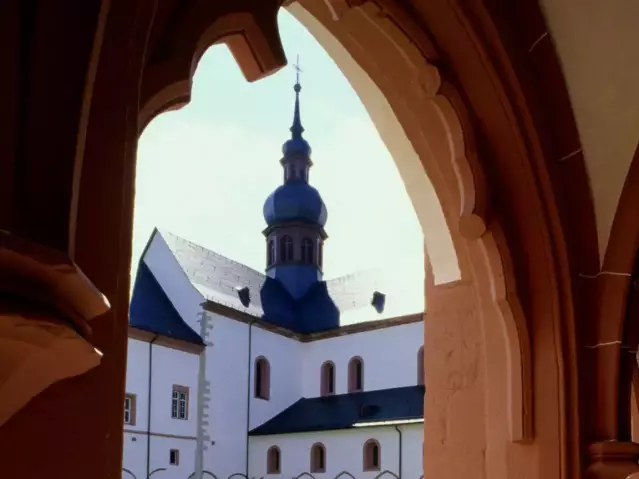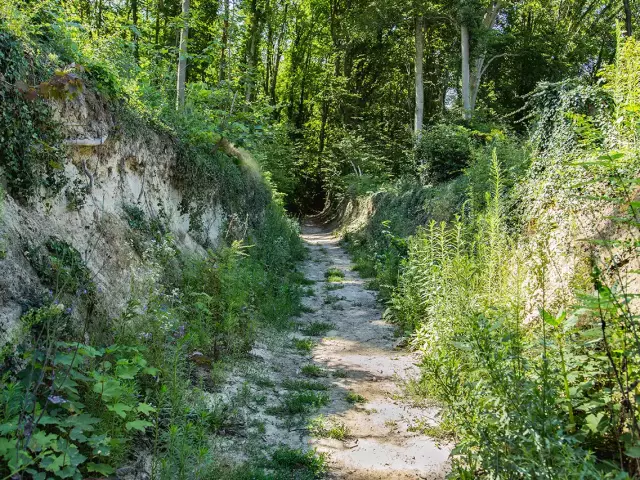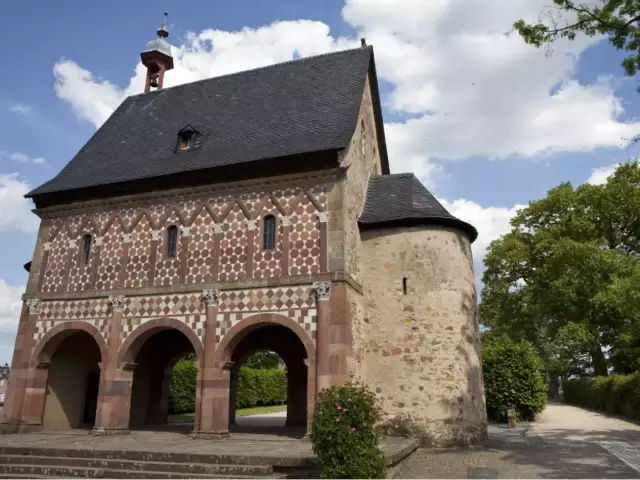Villa Weilberg with Wine Press

Underneath a red roof, a true treasure of viticulture is hidden in the middle of the vineyards on the edge of the city of Bad Dürkheim: a two thousand year old wine press from Roman times. The wine press with its building is the only one of that kind between Southern Palatinate and the Mosel.
It was found in the course of a land clearing project in 1981, rearranging the vineyards around the little community of Ungstein. What the diggers unearthed was nothing less than a sensational discovery: The wine press near Ungstein finally proved that it was truly the Romans who cultivated grapevines on the soft slopes of the Pfalz region.
The huge Roman estate, discovered right above the wine press building, was a sensational discovery for archeologists and wine experts: the enormous three levelled villa stemming from the 1st century after Christ was built by a rich Roman from Worms. The villa's front had a length of 70 metres and was 15 metres wide, in addition, on each side wings were added. It was the first Roman mansion to be found in the Palatinate region and it clearly demonstrated that the Romans indeed ran professional agriculture in this area. The farm covered about 75 000 square meters of land where crops were cultivated – among them grapevines.
The grapes were pressed in three flat basins in the annex. The function of the basins, however, was only discovered when a grapevine knife was found along with a sickle, a hatchet used in vineyards and several grape seeds steming from ancient grape varieties, all found within and near the basins. Scientific research showed the grapes to stem from wild grapevines which carried early varieties of Riesling, Traminer and Pinot grapes - the ultimate proof that the Romans once pressed the grapes with their feet in these basins.
The grapes were first filled into the basins on the outer side and there trod upon by workers with their bare feet. The juice then ran into the middle basin that was situated a little deeper from where it was filled into barrels. An average of 200 000 liters was produced here each year, so experts say. On October 25 in 1991, after a hiatus of approximately 1500 years, the antique press was revived and proved its worth right away: in the newly renovated basins, grapes were trod upon and grape juice made into wine once again. Even viticulture blooms anew: an old Roman vineyard is now planted with new grapes. Roman life can be experienced again every June, when at the end of the month the Wine Feast at the Roman Wine Press is celebrated in the Wine Estate of Weilberg.




